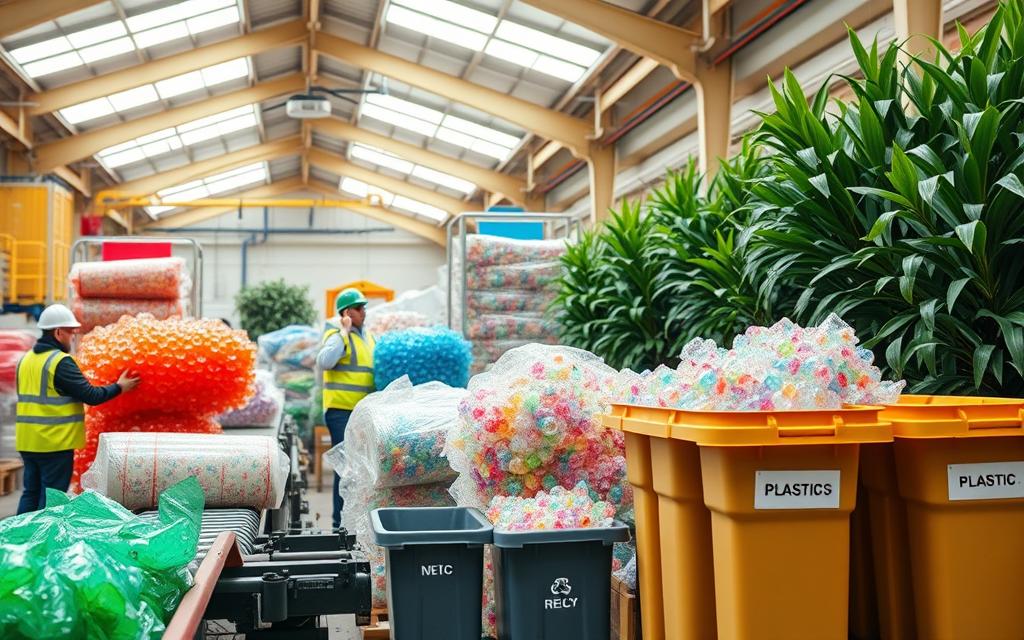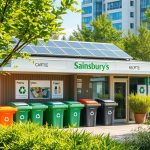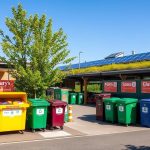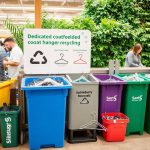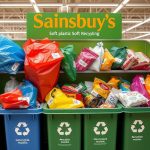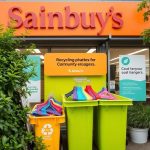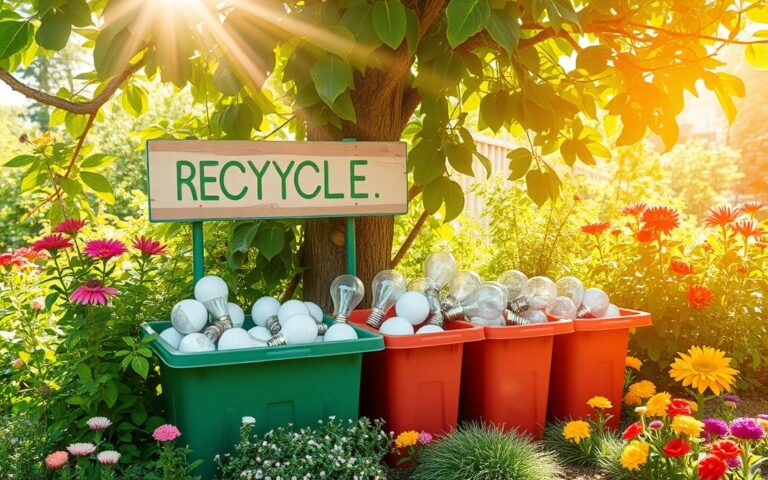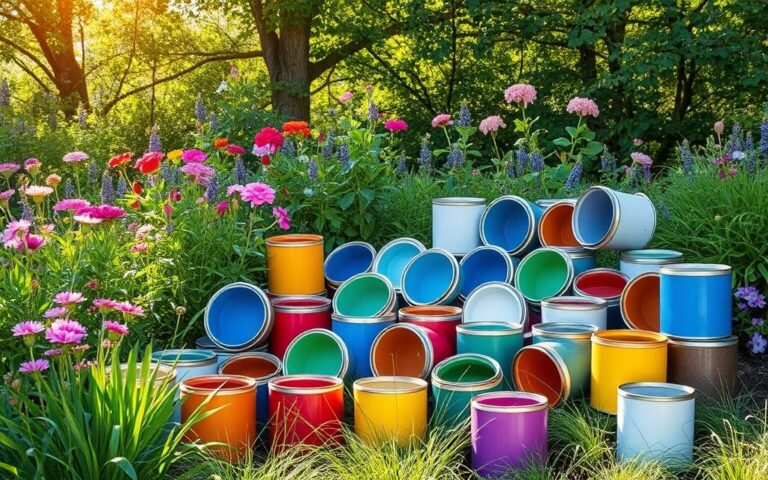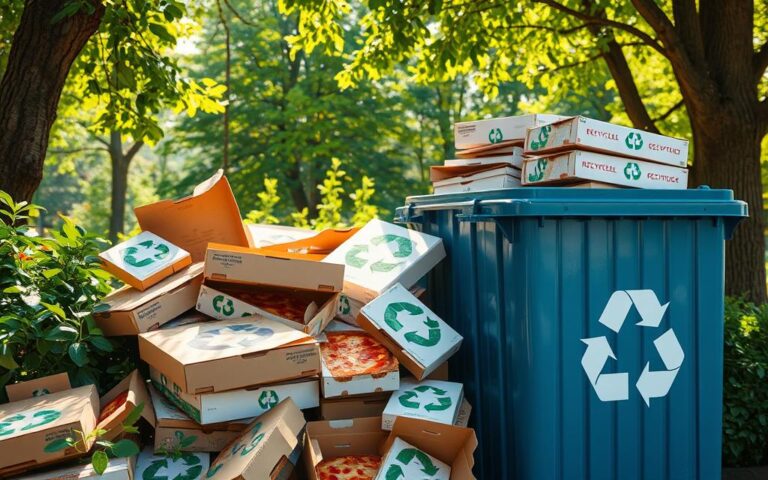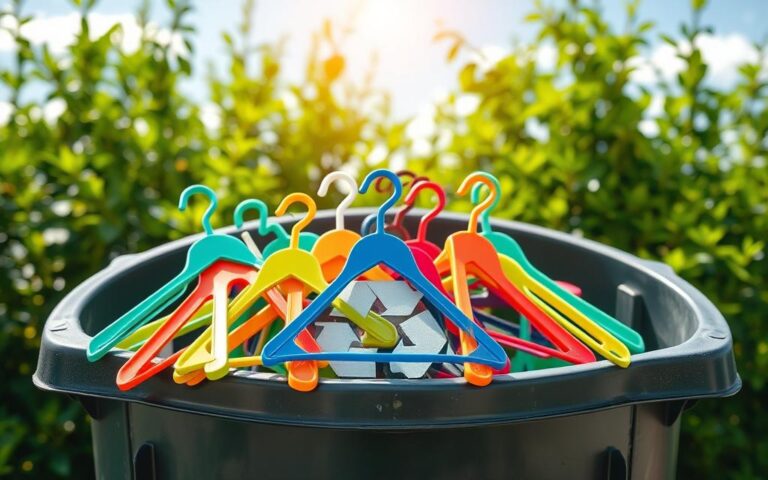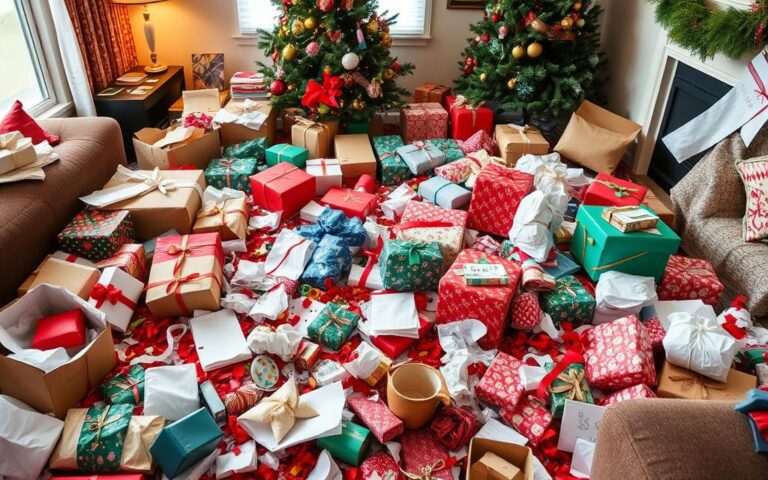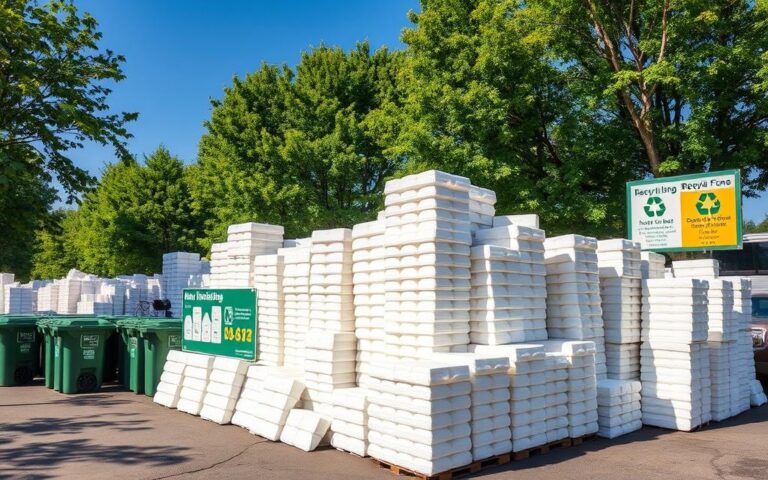Is Bubble Wrap Recyclable in the UK? How to Dispose Responsibly
Bubble wrap keeps fragile items safe during shipping. The UK produces over 240,000 miles of it each year. Despite its use, many don’t know that you can recycle bubble wrap. This often leads to a lot of it in landfills.
Bubble wrap can take 500 years to break down, harming our planet. In 2021, Sainsbury’s gathered 18 tonnes of plastic waste a month from stores. But, only 9% of LDPE plastic, including bubble wrap, gets recycled. Knowing how to properly get rid of bubble wrap is key for everyone. To learn more about recycling bubble wrap, check out this guide.
Understanding Bubble Wrap: What Is It Made From?
Bubble wrap has become widely used as protective packaging in the last 50 years. Studying its bubble wrap composition shows why it’s so important for packing. This makes it clear why it’s a main choice for packaging.
Composition and Properties of Bubble Wrap
Bubble wrap is mostly made from low-density polyethene (LDPE). LDPE is a flexible, strong plastic used in many things like carrier bags and cling film. Its special makeup lets it form air pockets that protect items well in transit.
Here are some key traits of bubble wrap:
- Lightweight yet strong
- Excellent insulation properties
- Transparency enabling visual inspections
- Recyclability as indicated by Resin Code 4
Manufacturing Process of Bubble Wrap
The manufacturing process starts with LDPE resin beads. These beads are heated, mixed, and made into a thin film. The film is then vacuum-filled with air, creating bubbles.
These bubbles then wrap around fragile items, offering great protection. The steps include:
- Heating LDPE resin beads
- Forming a thin film
- Rolling the film flat
- Vacuum filling with air to create bubbles
This careful process makes bubble wrap durable and effective. Its properties fit many different products. There’s traditional bubble wrap and special kinds like anti-static for electronics and biodegradable for those thinking green.
Why Bubble Wrap Is Popular and Its Uses
Bubble wrap is a favourite for many, thanks to its bubble wrap applications in various industry uses. It protects items during shipping and is also used in daily tasks. This shows how important and widespread bubble wrap is.
Common Applications Across Industries
Bubble wrap is key in many fields because of its ability to cushion. Important bubble wrap applications are:
- Electronics: It keeps sensitive devices safe while being transported.
- Art and Glassware: It’s crucial for protecting fragile items.
- Pharmaceuticals: It helps in the safe shipping of temperature-sensitive medicines.
- Food and Beverage: It keeps food and drink products intact when delivered.
These industry uses show bubble wrap’s role in ensuring safe and reliable deliveries in different markets.
Innovative Uses Beyond Packaging
Bubble wrap is being creatively used beyond just packaging. For example:
- Gardening: It helps protect plants in bad weather by acting as insulation.
- Home Insulation: It provides a cost-effective way to keep homes warm.
- Art Installations: Artists use it to add unique textures and effects to their work.
These innovative uses show how adaptable and significant bubble wrap is in our lives. It not only serves practical functions but also encourages creativity across different areas.
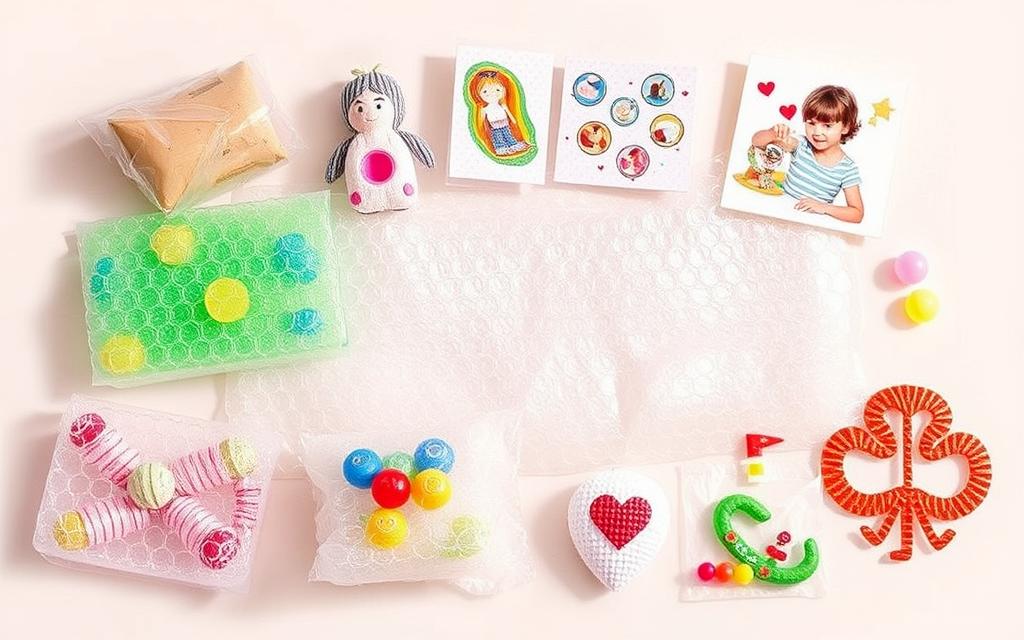
| Industry | Common Uses |
|---|---|
| Electronics | Protective packaging for devices |
| Art & Glassware | Safeguarding delicate artworks and glass items |
| Pharmaceuticals | Transport of sensitive medical products |
| Food & Beverage | Delivery of perishable goods |
| Gardening | Insulation for plants |
| Art Installations | Use in creative projects |
Environmental Concerns Regarding Bubble Wrap
Bubble wrap’s effect on the environment has raised alarms lately. Being made of low-density polyethylene, it’s hard on our ecosystems, especially if not thrown away carefully.
The Impact of Plastic Waste on Ecosystems
In Europe, plastic waste forms about 39% of all packaging waste. Sadly, only a small bit gets recycled. Over 80% of trash in the ocean is plastic, like bubble wrap. This harms sea creatures and changes their homes and what they eat. When these animals eat plastic, it’s really bad for their health and leads to fewer of them.
Decomposition Time and Landfill Issues
Bubble wrap takes a shocking 1,000 years to decompose in dumps. Its long life means it piles up, leaking poisons into the ground and water. These poisons are a danger to animals and humans alike. We must work together to throw things away properly and recycle more.
| Environmental Concern | Impact | Potential Solutions |
|---|---|---|
| Plastic Waste | 39% of packaging waste in Europe | Encouraging recycling and the use of alternatives |
| Marine Litter | Over 80% of marine litter consists of plastic | Implementing cleanup programs and stricter regulations |
| Decomposition Time | Up to 1,000 years | Promoting biodegradable alternatives |
| Toxin Release | Contamination of soil and water | Improved waste management and recycling practices |
It’s crucial to tackle the issues bubble wrap brings to the environment. By joining forces, we can lessen the harm of plastic waste. Let’s work for a greener future.
Is Bubble Wrap Recyclable in the UK?
People often wonder if bubble wrap can be recycled. It is recyclable, but there’s a lot of confusion about the right way to dispose of it.
Recycling Capabilities of Low-Density Polyethene
Bubble wrap is made from a plastic known as low-density polyethylene (LDPE), or plastic number 4. Most recycling plants can’t process it. Yet, you can recycle bubble wrap at special collection points in some supermarkets. These places help recycle LDPE into new products like outdoor furniture.
Common Misconceptions About Recycling Bubble Wrap
Many believe bubble wrap can’t be recycled. This is due to its tendency to jam recycling machines and contaminate other materials. As a result, much of it ends up in landfills. Knowing the correct way to recycle bubble wrap helps prevent environmental harm.
| Material | Recyclability | Common Misconceptions |
|---|---|---|
| Bubble Wrap (LDPE) | Accepted at supermarket drop-off points | Believed to be non-recyclable |
| Polystyrene | Recyclable only at specialist plants | Can be recycled kerbside |
| Wood (e.g., ice lolly sticks) | Not handled by most recycling centres | Recyclable in kerbside bins |
| Plastic cutlery | Only 10% recycled | Can be disposed of in regular bins |
How to Properly Dispose of Bubble Wrap
It’s very important to dispose of bubble wrap responsibly to protect the environment and recycle it effectively. Remember, you can’t just throw bubble wrap in your normal bin. You should take it to specific recycling spots around the UK. Many large supermarkets like Tesco and Sainsbury’s have special areas where you can leave recyclable soft plastics, such as bubble wrap.
This action helps make sure that bubble wrap is recycled the right way. It also helps in reducing plastic waste.
Designated Recycling Points in the UK
If you need to find a place to recycle bubble wrap, try the large supermarket chains. They usually have bins for collecting soft plastics. These places know how to deal with bubble wrap, even if it has a little bit of tape on it.
Some local councils might pick up bubble wrap for recycling, but this service isn’t wide-spread yet. So, it’s important to know where you can take your bubble wrap.
Steps to Ensure Successful Recycling of Bubble Wrap
To recycle bubble wrap correctly, there are a few steps to follow. First, clean the bubble wrap and remove any labels or tape. These things can cause problems in the recycling process.
It’s a good idea to pop the bubbles too. This makes the bubble wrap easier to handle and recycle. Always remember to take your bubble wrap to the right recycling points. Doing this regularly is a big help to the environment.
FAQ
Is bubble wrap recyclable in the UK?
Yes, you can recycle bubble wrap in the UK. It’s made from LDPE and can go to special collection spots in supermarkets.
What is bubble wrap made from?
Bubble wrap comes from LDPE, a type of plastic. This material is also in carrier bags and cling film.
How is bubble wrap manufactured?
To make bubble wrap, resin beads are heated and formed into a film. This film is then air-filled to create bubbles.
What are the common applications of bubble wrap?
Bubble wrap protects breakable items with its cushioning. It’s also used in engineering, medicine, and gardening.
How does bubble wrap affect the environment?
If not disposed of properly, bubble wrap adds to plastic waste. This harms our planet. It takes hundreds of years to break down, leaking poisons into our earth and water.
Why do people think bubble wrap is not recyclable?
Some believe bubble wrap can’t be recycled as its structure might jam recycling machines. This is if it’s not properly prepared.
What steps should I take to recycle bubble wrap properly?
For recycling, separate bubble wrap from other trash. Clean it and remove stickers. You might want to pop the bubbles too, then bring it to recycling spots.
Where can I find bubble wrap recycling points in the UK?
You can find spots to recycle bubble wrap in big supermarkets and local recycle centres around the UK.

